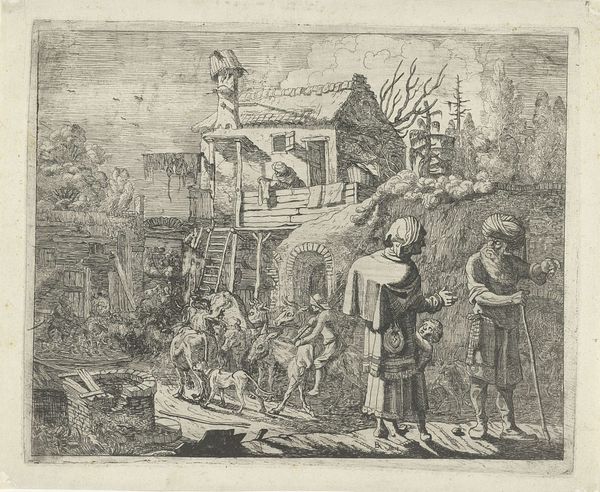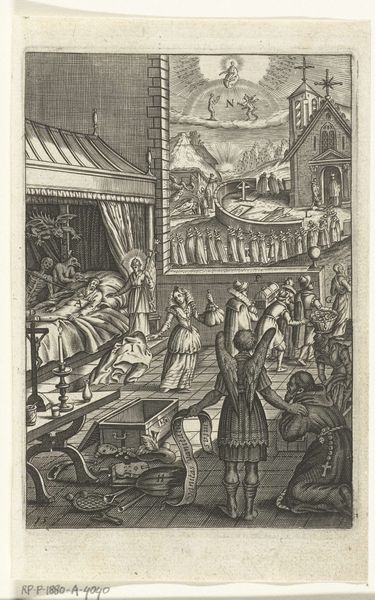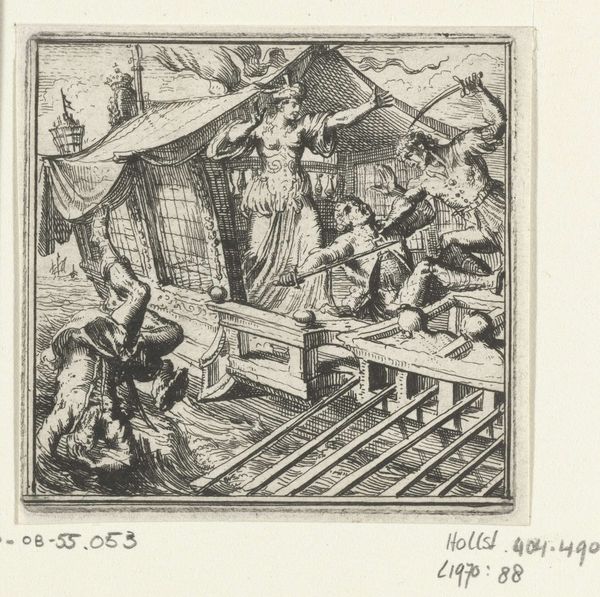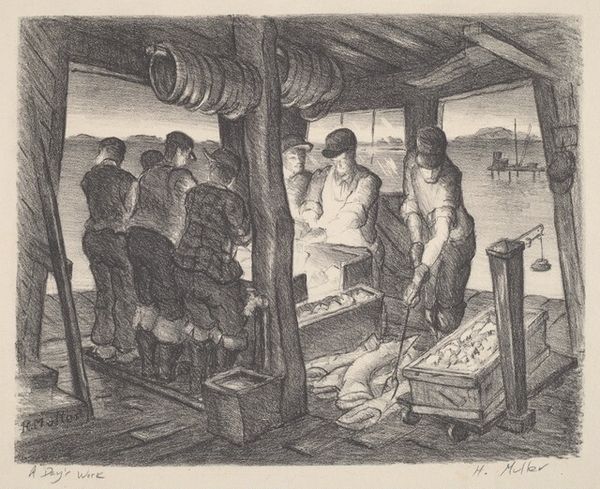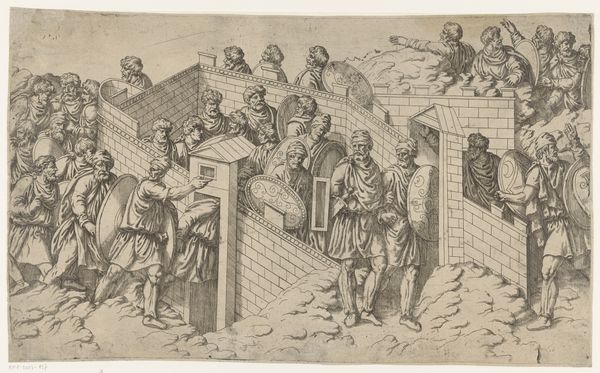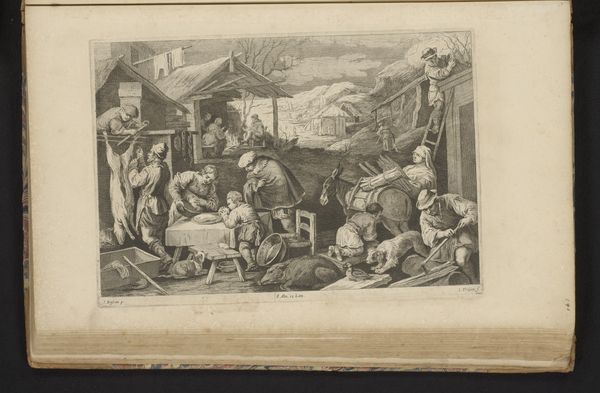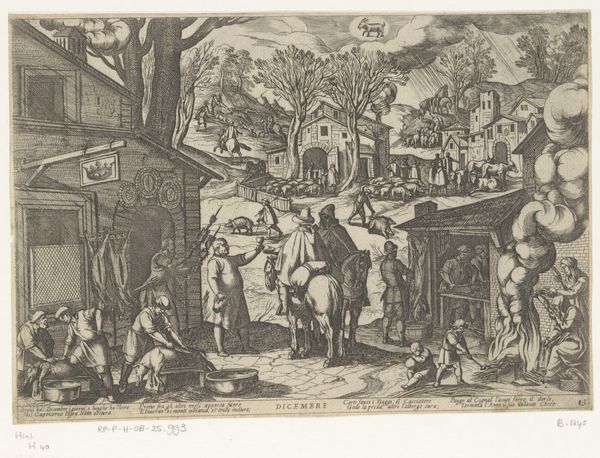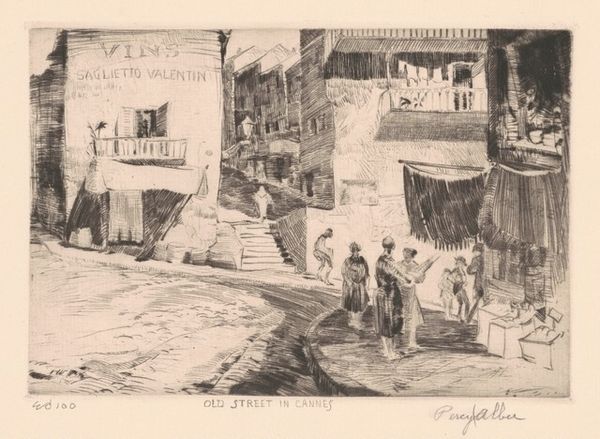
print, etching
# print
#
etching
#
cityscape
#
realism
Dimensions: plate: 101 x 125 mm sheet: 152 x 197 mm
Copyright: National Gallery of Art: CC0 1.0
Curator: Beulah Stevenson's "Jazz," made around 1926. The print, realized through etching, presents a fascinating cityscape. My first impression is one of dynamic tension, a crowded yet intimate scene. Editor: I'm struck by the apparent starkness and, indeed, the 'making' of this etching—how did the social milieu influence the accessibility of printmaking at this time? The choice of etching itself signifies a deliberate engagement with the means of reproduction. Curator: That's a fascinating question, viewing etching as a potentially democratizing force in art. The imagery seems to capture the energy of urban life in the Jazz Age—radio technology becoming visible to consumers in shop windows. Editor: Precisely! I’m drawn to this “Radio” detail in the composition: Stevenson likely wanted the viewer to understand how mass communications like radio helped transmit music such as Jazz into different markets, influencing broader patterns of taste, consumerism, and possibly creating new jobs and businesses within neighborhoods. The visible, and at the time revolutionary, access of mass technology such as the “radio” itself gives us insight into class stratification and the circulation of capital goods. What commentary, however subtle, do you think that the artist provides, however intentional, about how mass communications can transform our notions of everyday culture? Curator: Indeed! The placement of figures ascending the stairs evokes questions about societal access. The figures—with strollers and gatherings in the foreground, combined with the “RADIO” lettering etched so indelibly into the shops that we are asked to notice at the center of the picture—emphasizes access as much as its limitations. The entire image feels charged with the hum of modernity. What an evocative piece. Editor: Absolutely. I feel I come away understanding more about the social landscape where technological modernity such as jazz or the radio transformed ideas of artistic process and production itself. The visual process through which we encounter the image helps underscore how capital transformed cultural traditions.
Comments
No comments
Be the first to comment and join the conversation on the ultimate creative platform.
